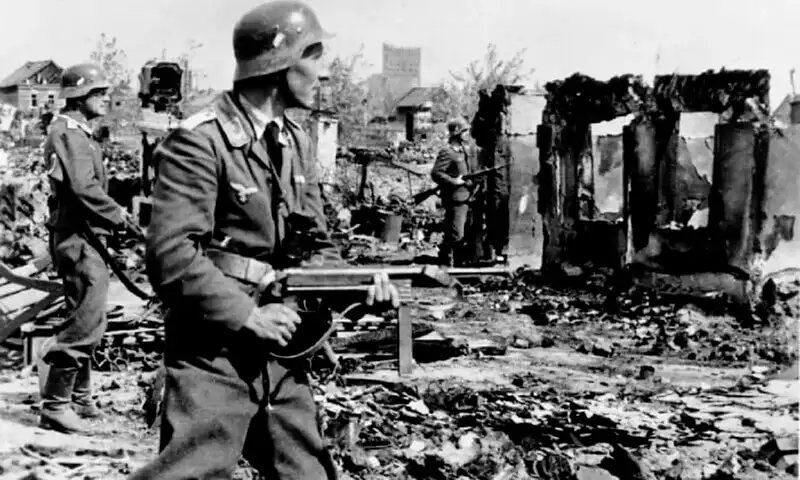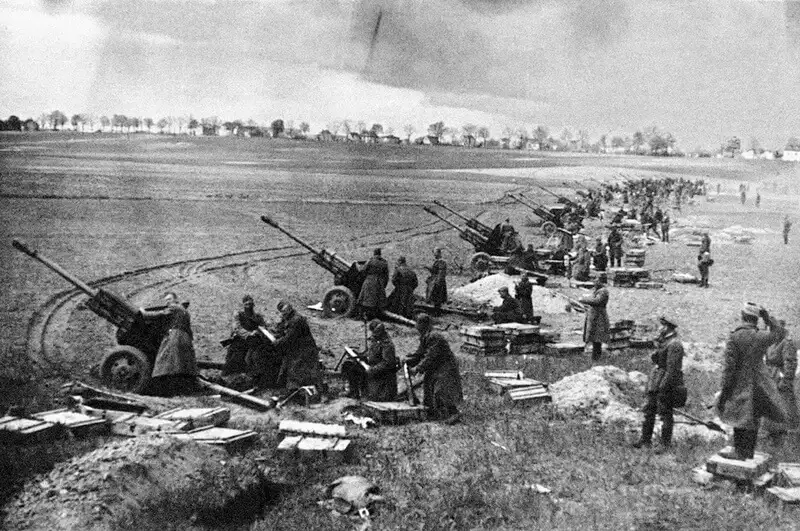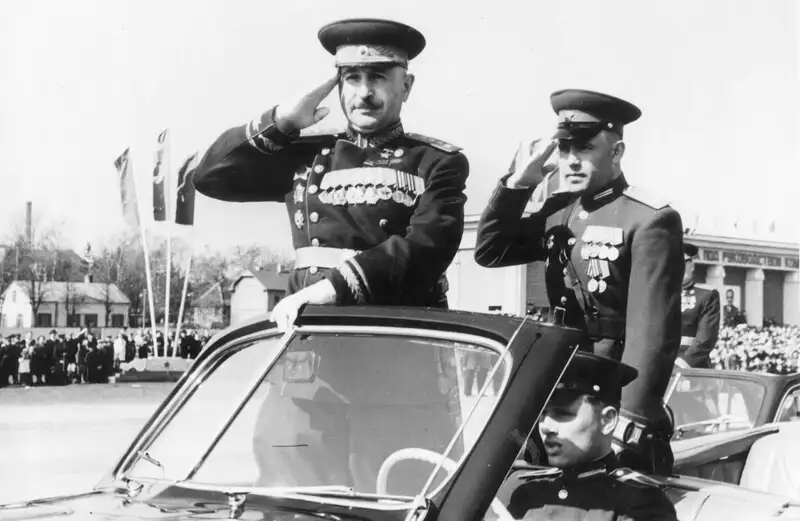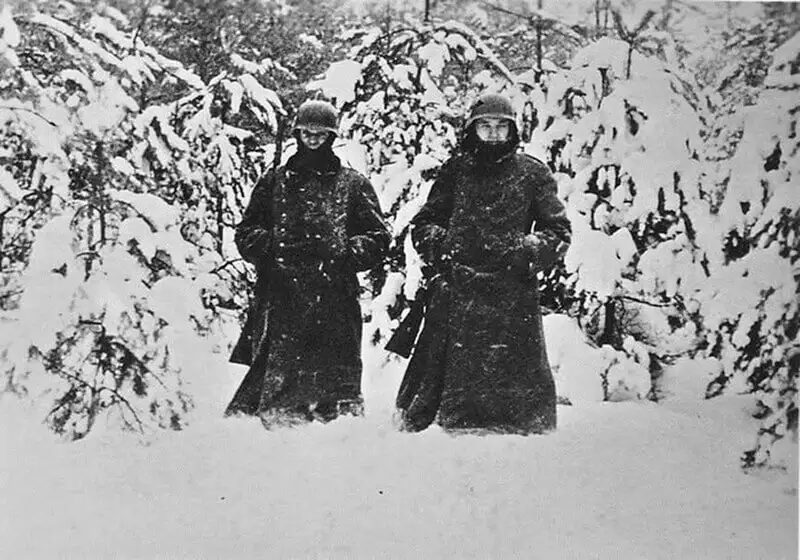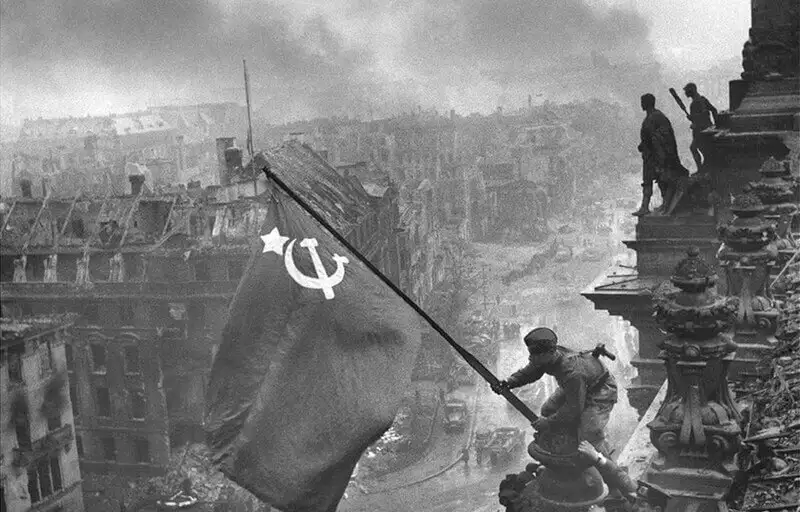The Battle of Stalingrad, occurring between August 1942 and February 1943, was a brutal conflict between Russia and Nazi Germany in World War II. With over two million soldiers engaged and nearly two million casualties, including tens of thousands of Russian civilians, the battle at this strategic Russian industrial hub stemmed from Nazi Germany’s ambitions and marked a pivotal moment that shifted the advantage to the Allies. In this article, Pywar explores the reasons behind the battle, its progression, and its historical significance.
Reasons for the Battle of Stalingrad
In the midst of World War II, after seizing much of Ukraine and Belarus in the spring of 1942, the Nazi German army decided to launch an offensive into southern Russia during the summer of that year.
Under Joseph Stalin’s leadership, Soviet forces had successfully repelled a German attack on Moscow during the winter of 1941-1942. However, the Soviet Red Army suffered heavy losses in manpower and equipment during this campaign. Stalin and his generals, including Nikita Khrushchev, anticipated that Germany would continue targeting Moscow. But Hitler and the German military had different plans.
Hitler set his sights on capturing Stalingrad, a vital Russian industrial center that produced numerous goods, including artillery for the military. The Volga River, running through the city, was also a critical transportation route linking western Russia to its remote eastern regions.
Hitler viewed Stalingrad as a propaganda prize of immense value, partly because it bore Stalin’s name. For the Soviets, this only strengthened their resolve to defend the city at all costs. When Hitler declared that all men in Stalingrad would be killed and women deported after its capture, a ferocious battle was set in motion.
Stalin ordered every able-bodied Russian to take up arms and defend the city. On August 23, 1942, Germany’s 6th Army began its assault on Stalingrad.

- The Nazi German army decided to launch an offensive into southern Russia during the summer of that year. (Source: Collected)
The Battle of Stalingrad Begins
Initially, Russian forces managed to halt the German advance in fierce clashes north of Stalingrad. Despite losing over 200,000 soldiers, the Soviet Red Army held the Germans at bay.
Aware of Hitler’s intentions, Russia evacuated most of its food supplies and livestock from Stalingrad, but over 400,000 city residents were not relocated. Soviet leaders believed their presence would motivate the troops.
Just days after the offensive began, Germany’s Luftwaffe air force rendered the Volga River unusable for transport, sinking numerous Russian commercial ships. From late August, the Luftwaffe carried out dozens of air raids, reducing the city to ruins.
The exact number of civilian deaths remains unrecorded, but it is estimated that tens of thousands were killed, with many others captured and sent to Germany as forced laborers.
By September, the Luftwaffe dominated Stalingrad’s skies, plunging Russia into desperation. Workers not involved in weapons production were called to fight, often without arms. Women were mobilized to dig trenches at the front lines.
Yet Russia continued to suffer heavy losses, and by the fall of 1942, Stalingrad was almost completely destroyed.

- Russian artillery prepares to fire during the Battle of Stalingrad, 1942, showcasing their determined resistance against the Germans. (Source: Collected)
“Not One Step Back!”
Despite severe losses and relentless Luftwaffe airstrikes, Stalin forbade any retreat from Stalingrad, issuing the infamous Order No. 227: “Not one step back!” Soldiers who surrendered faced military tribunals and potential execution.
With fewer than 20,000 troops and less than 100 tanks left in the city, Russian forces finally received reinforcements from Stalin’s generals. Fierce street-by-street combat ensued, with both sides employing snipers positioned on rooftops.
Under the command of Generals Georgy Zhukov and Aleksandr Vasilevsky, Russian forces concentrated in the mountains north and west of Stalingrad, launching Operation Uranus—a strategic counteroffensive.
By late November 1942, Russian troops established a defensive encirclement, trapping nearly 300,000 German and allied soldiers of the 6th Army. This siege left the Germans starved of supplies, a weakness Russia exploited during the harsh winter months that followed.

- General Georgy Zhukov and Soviet commanders lead the Battle of Stalingrad. (Source: Collected)
The Russian Winter Sets In
Russia’s brutal winter began, placing the Germans at a disadvantage as they fought in unfamiliar, harsh conditions. Soviet generals seized this opportunity, reinforcing positions around Stalingrad, cutting off German supply lines, and tightening the encirclement.
Victories in nearby areas, such as Rostov-on-Don, 250 miles from Stalingrad, stretched Axis forces—primarily German and Italian—thin. In Operation Little Saturn, Russian troops broke through Italian defenses west of the city.
Trapped in Stalingrad, German commanders abandoned rescue efforts, but Hitler refused to surrender, even as his troops ran out of food and ammunition in Russia’s unforgiving winter.

- German troops endure the harsh Russian winter during the Battle of Stalingrad, 1942. (Source: Collected)
The Battle of Stalingrad Ends
By February 1943, Russian forces recaptured Stalingrad and took nearly 100,000 German soldiers prisoner, though small pockets of resistance fought on until early March. Most German captives perished in Russian camps due to disease or starvation.
The defeat at Stalingrad marked the first time in World War II that Hitler publicly acknowledged a failure. The battle forced Hitler and the Axis into a defensive stance, while boosting the morale of Russian troops on the Eastern Front.
Many historians believe the Battle of Stalingrad was a critical turning point in the war, paving the way for the Allies—Russia, Britain, France, and the United States—to secure victory.
In February 2018, Russians gathered in Volgograd, the modern name for Stalingrad, to commemorate the 75th anniversary of the end of this devastating battle.

- The Soviet flag flies over Berlin, marking the historic victory of the Allied forces in World War II. (Source: Collected)
Conclusion
Through this article, Pywar hopes to help readers better understand the Battle of Stalingrad—a ferocious conflict sparked by Nazi Germany’s territorial ambitions and Stalingrad’s strategic importance. Lasting from August 1942 to February 1943, the battle claimed nearly two million lives, including soldiers and civilians. Ending in a Soviet victory, Stalingrad marked Hitler’s first major defeat, forcing the Axis onto the defensive. It was a decisive turning point in World War II, setting the stage for the Allies’ ultimate triumph.
Stay tuned for more content on World War history and the latest standout military news!
Translated by: Le Tuan
Source: History.com – Battle of Stalingrad

